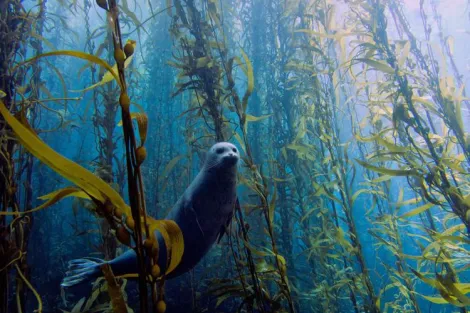California is known for its lovely beaches, good food, and dramatic landscapes. But take a dive into its cold waters and discover a new type of wonder: the California kelp forest. The kelp forests are home to many endangered species, such as the sea otter. The animal in this picture is another marine mammal, the harbor seal (Phoca vitulina). Harbor seals can be found from Baja, Mexico, to the Bering Sea. They feed on crustaceans, fish, squid and other mollusks, which they find in the kelp forests.
Underwater Photography Contest from University of Miami’s Rosenstiel School
Every year the University of Miami's Rosenstiel School of Marine and Atmospheric Science hosts an underwater photography contest for amateur photographers. From playful marine mammals to hard-to-see invertebrates, these photos capture beautiful underwater scenes. Here are the winners from the 2013 contest in five different categories: Best Overall, Macro, Wide Angle, Fish or Marine Animal Portrait, and Student.
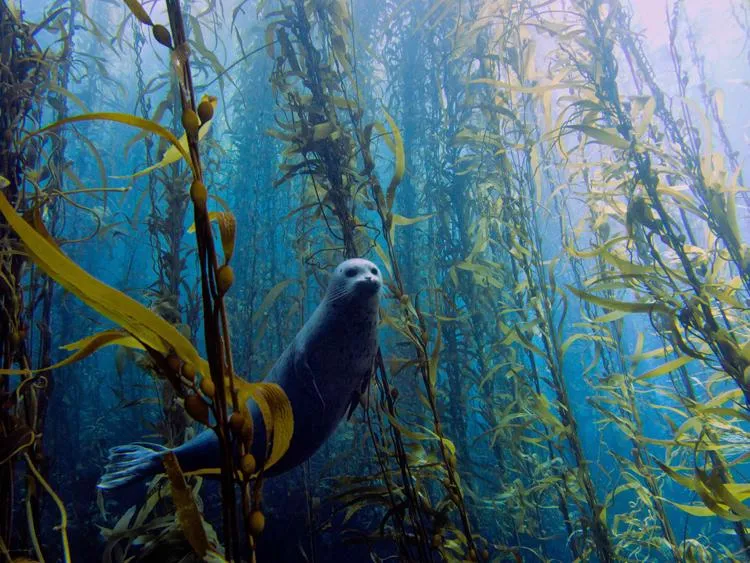
Best Overall Photograph
Credit: Kyle McBurnie, California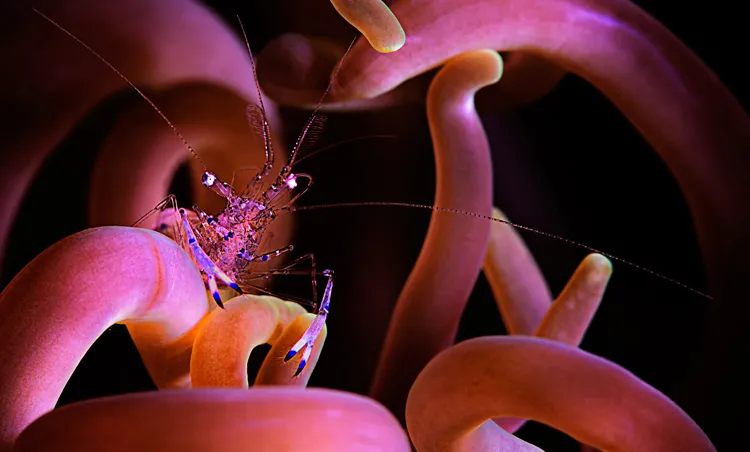
Macro 1st Place
Credit: Beth Waterson, MissouriThe anemone shrimp shown in this picture, Periclimenes inornatus, is a lot smaller then it looks—most adult anemone shrimp never get bigger than an inch long. As the name suggests, anemone shrimp (like clownfish) live with anemones. Both clownfish and anemone shrimp are resistant to the stings of the anemone’s tentacles. Instead of eating the anemone, they hide inside and feed off of leftovers coming from their host. Anemone shrimp are found in tropical waters, as well as aquariums, across the world.
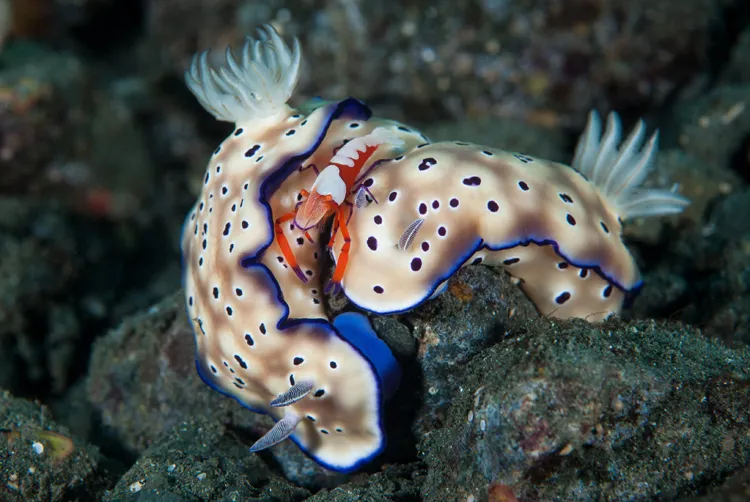
Macro 2nd Place
Credit: Douglas Good, PennsylvaniaAmidst the bright blue tufts and the dark blue fringes of these beautiful nudibranchs (Risbecia tryoni), you might not even notice the red emperor shrimp, Periclimenes imperator. Both are native to the Indo-Pacific region and are often found together. The nudibranch eats sponges, while its shrimp partner feeds on worms. Both are small creatures, with the nudibranch usually reaching 60 millimeters in length as an adult.

Macro 3rd Place
Credit: Fredercia Bambi, ItalyLike the shrimp in the Macro 1st place photograph, this porcelain crab (Neopetrolisthes maculatus) also lives with anemones. It is very small, with a colorful shell, and is found in the Indo-Pacific region. These crabs fiercely defend their anemones from potential invaders. Like other porcelain crabs, they use long bristles around their mouths to catch small animals floating in the water around them.
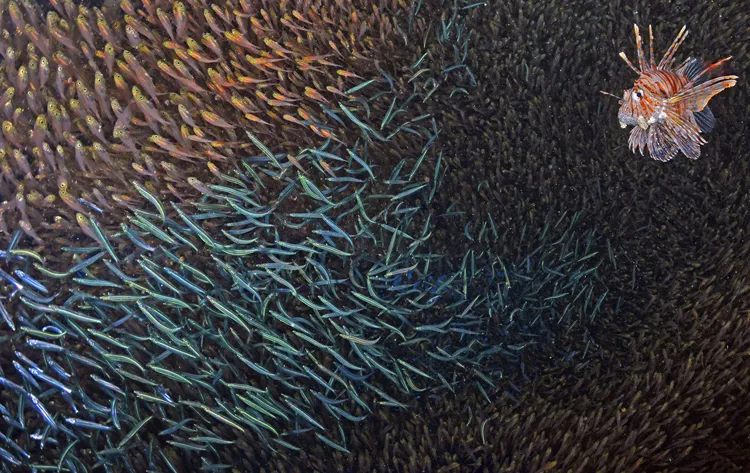
Wide angle 1st place
Credit: Alex Tattersall, United KingdomThis photograph, much like Van Gogh’s Starry Night, is awhirl with hundreds of schooling fish. The focal point, however, is the lionfish. The various species of lionfish range in size from eight to fifteen inches. They hide during the day in reefs and lagoons and come out at night to hunt shrimps, crabs and small fish. Lionfish can deliver a powerful sting, which causes excruciating pain for the recipient, although it is rarely fatal. The venom is stored in their fin rays. This lionfish (Pterois antennata) and other lionfish are native to the Indian Ocean and west Pacific.

Wide angle 2nd place
Credit: Joesph Tepper, New YorkThe dolphins in this picture are spinner dolphins (Stenella longirostris), named for how they spin in the air when they leap from the water. Spinner dolphins have four sub-species: eastern, Central American, Gray’s, and dwarf spinner dolphins. Spinner dolphins live around the equator, and mothers and calves are known to form strong bonds. They communicate through whistles and clicks, and hunt with echolocation. Spinner dolphins hunt for fish at night—the group surrounds a school of fish, and one at a time each dolphin dives through it to feed.
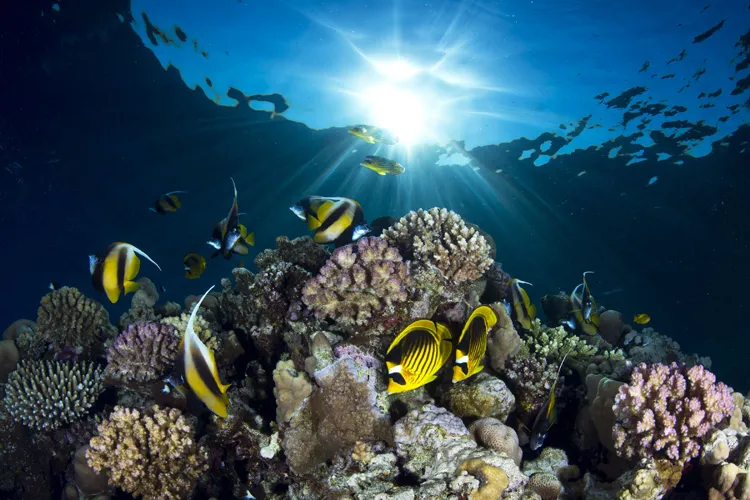
Wide angle 3rd place
Credit: Pietro Cremone, ItalyBeneath the sun shining through the Red Sea onto a hill of coral, butterfly fish and angelfish swim together. The two fish can be confused for each other, but are distinguished by the spine that the angelfish has on its gill covers. The raccoon butterfly fish (Chaetodon lunula) gets its name from the raccoon-like band across its eyes that you can see on the fish in the center of the photograph. This species of fish often feeds on anemones, but will also eat soft corals.

Fish/marine animal portrait 1st place
Credit: Steven Kovacs, FloridaLionfish, or Pterois, are reef fish native to the Indo-Pacific region. The fish shown here is a juvenile, probably one inch long, and will grow to about a foot. Because of their highly venomous spines, these fish have few natural predators. Two species of lionfish have invaded many parts of the Atlantic, including the Caribbean and the east coast of the United States, where they are disrupting natural food webs by eating many small fish.

Fish/marine animal portrait 2nd place
Credit: Marcello DiFrancesco, ItalyOctopi (or octopuses, both are technically correct) are renowned as one of the smartest animals in the ocean. With no bones except for their sharp beak, they can fit through almost any hole or crevice. Their skin can change colors to blend in with their surroundings, and if attacked they can run away quickly, spray ink, or even amputate a flailing limb as a distraction. This particular species of octopus, the blue-ringed octopus (Hapalochlaena lunulata), is extremely venomous, and its bite can kill a human within minutes. The beautiful blue rings light up as a warning to potential attackers to stay clear.
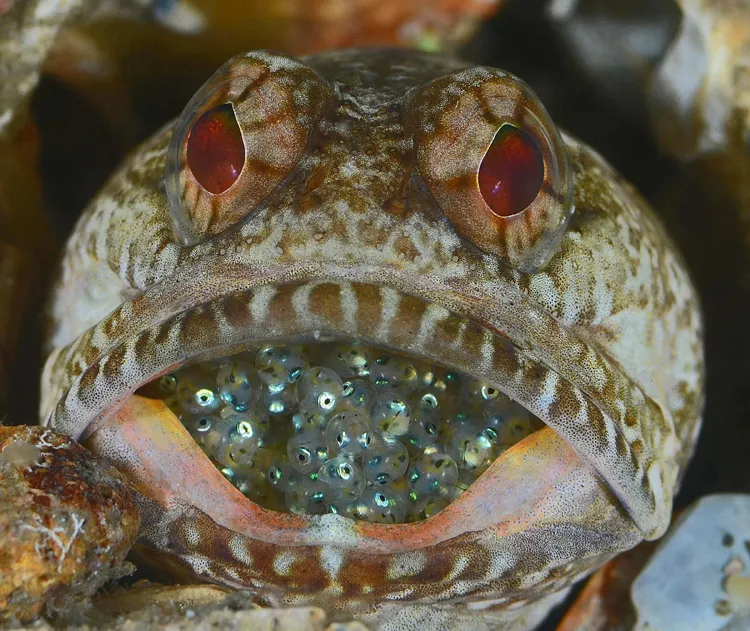
Fish/marine animal portrait 3rd place
Credit: Judy Townsend, FloridaMuch like the seahorse, in the jawfishes males care for the young. This male, a dusky jawfish (Opistognathus whitehurstii), has a clutch of eggs in his mouth. The eggs typically stay in the mouth for eight to ten days. When eggs are not in their mouth, the fish use their mouths to dig holes that they live in, ingesting sand and spitting it back out to make a vertical tunnel. Mouthbrooding also is found in other marine fishes, such as cardinalfishes and sea catfish.

Student entry 1st place
Credit: Laura Rock, FloridaThe Atlantic Goliath grouper (Epinephelus itajara) is found in shallow tropical waters. They can reach sizes of 3 meters and will eat crustaceans, other fish, octopi, and even sharks. The title of goliath is certainly fitting—in fact, the biggest goliath grouper caught on a line was 680 pounds (around the weight of four people), and was caught off of Florida in 1961. But, despite their fearless and invulnerable appearance, the goliath grouper is endangered throughout its range. Their willingness to approach spear fishermen and to return to spawn in the same location at a set time has lead to mass killings.
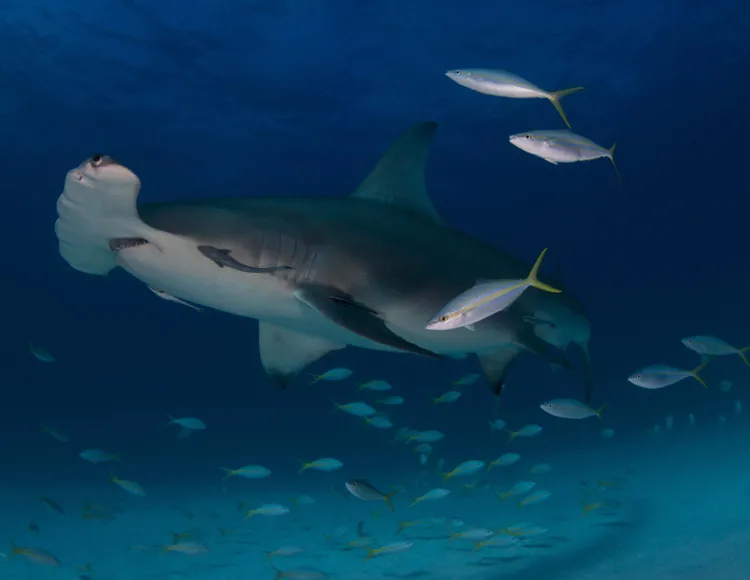
Student entry 2nd Place
Credit: Laura Rock, FloridaPerhaps the most distinctive marine animal of all—the great hammerhead has a unique hammer-shaped head that gives it a wide field of view as well as stereo vision and excellent depth perception. Like other sharks, the hammerhead has many teeth—about 17 rows of teeth on the upper and lower jaws. The shark feeds on fish and other marine prey such as octopi. However, hammerheads rarely attack people. There has been only one confirmed instance of a hammerhead killing a human.
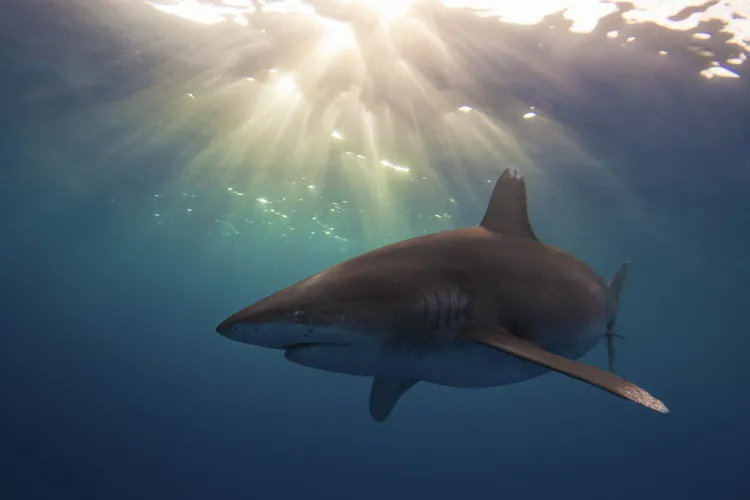
Student entry 3rd place
Credit: Austin Gallagher, FloridaUnlike the hammerhead, the oceanic white-tip shark (Carcharhinus longimanus) is aggressive towards humans. It has been noted as a danger for those stranded at sea, and is very powerful during feeding frenzies. Jacques Cousteau dubbed it “the most dangerous of all sharks.” The oceanic white-tip was once extremely abundant. However, its fins are the prime ingredient in shark fin soup, and its populations have been steeply declining. White-tips prefer open ocean waters where they cruise near the surface, and are largely solitary.


